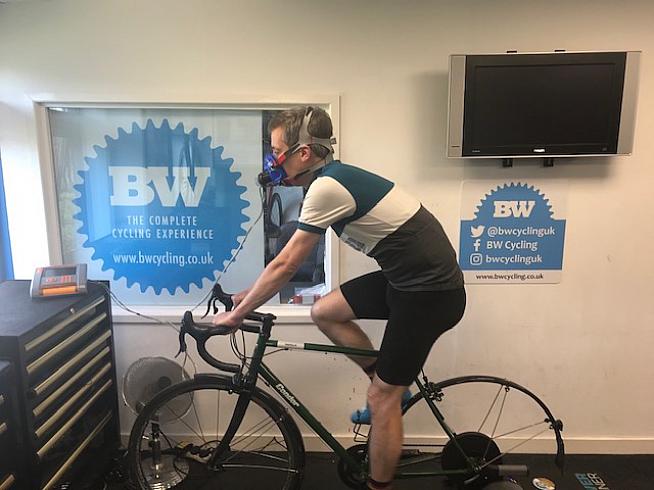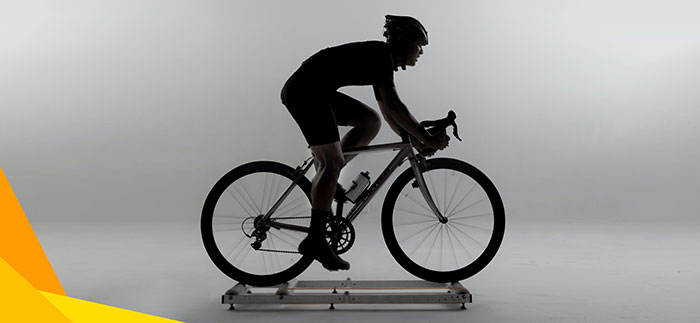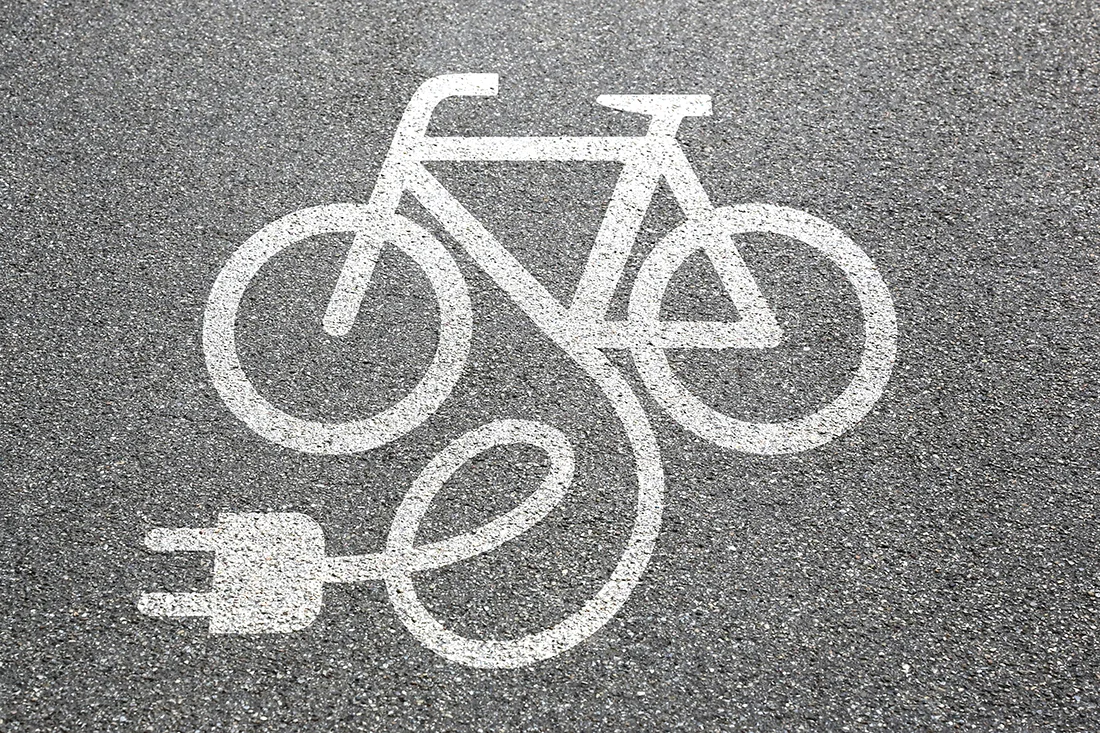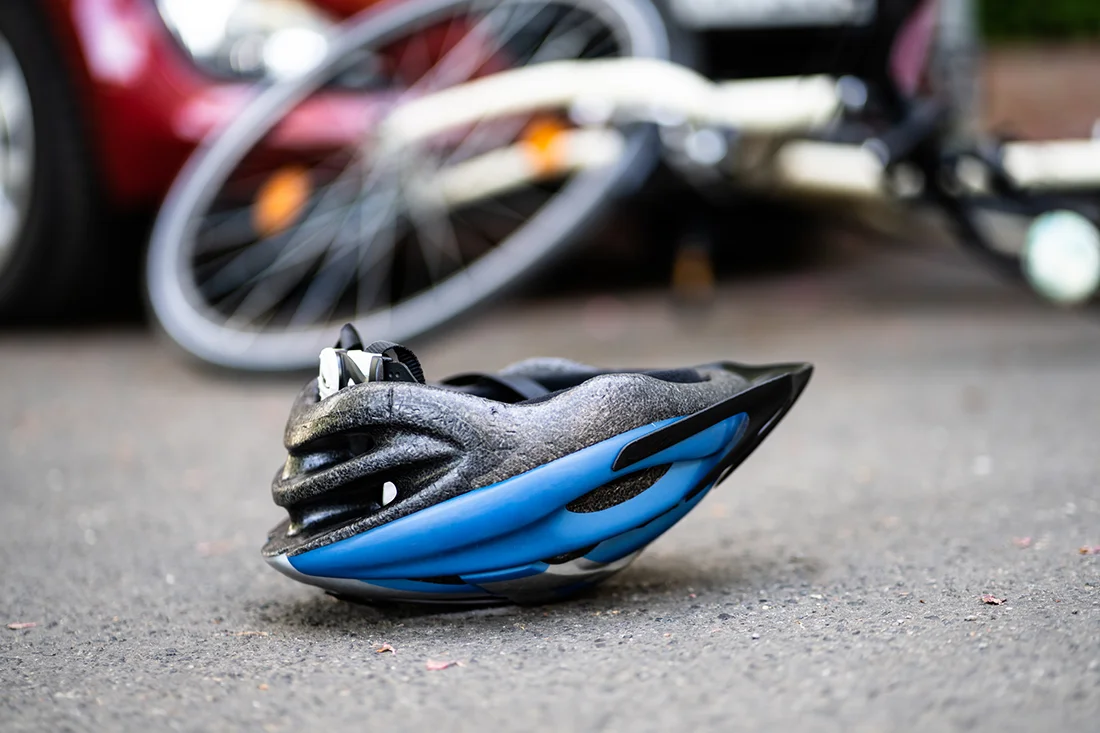The cycling world is filled with numbers, from power output and watts per kilo to CdA and FTP. There are so many equations and numbers to throw around, many of which have to do with cycling, your body, and its muscles.
VO2 max is one of the latter.
Instead of being a direct indicator of cycling performance like power-to-weight ratio or FTP, VO2 max is instead a measurement of what your body is capable of.
VO2 max is a very important measurement for cycling and for overall fitness, and in this article, we’ll dive into the details.
We’ll help explain ‘what is VO2 max’, how to do a VO2 max test, and how to increase your VO2 max.
Contents
What Is VO2 Max?
VO2 max is the maximal amount of oxygen that your body can consume and convert to energy at a given time.
The oxygen consumed is then used to break down nutrients in the body, such as carbohydrates, and utilize them for energy.
Without getting too deep into the exercise science weeds, VO2 max is basically your body’s maximal ability to use oxygen to break down nutrients and convert them to adenosine triphosphate (ATP).
VO2 max – specifically relative VO2 max – is measured in milliliters per kilogram per minute (mL/kg/min). In other words, VO2 max is a measurement of how many milliliters of oxygen your body can take in and process, per kilogram of body weight, per minute.
What Is VO2?
VO2 is not the same as VO2 max.
VO2 is simply your body’s ability to consume and convert oxygen to energy, but NOT at a maximal rate.
Your VO2 could be measured at any time throughout the day, and will be lower when resting (e.g. sleep) than during exercise (e.g. cycling).
What Is a VO2 Max Test?
Like a 20-minute power test to determine your functional threshold power (FTP), you can measure your VO2 max by completing a VO2 test. However, the protocol isn’t as simple as going out and doing a maximal cycling effort, especially if you want an accurate number.
There are some online calculators that can help you estimate your VO2 max by inputting your age, weight, FTP, maximal 5-minute power output, and more; but these are rough estimates.
Remember that VO2 max is a measure of your body’s ability to consume oxygen. You can’t measure that with a heart rate monitor, power meter, average speed, or time up a climb.
To get an accurate number for your VO2 max, you’ll need to head to an exercise science lab, put on a big mask, and complete a maximal exercise test.
During the test, you’ll be hooked up to a mask that measures the amount of air intake, and a heart rate monitor.
Then, on a treadmill or stationary bike, you’ll start a ramp test that builds from an extremely easy pace, all the way up to your maximal effort. For a cycling ramp test, for example, you would start out doing 60w for the first minute, with the power output increasing by 20w each minute.
You simply ‘go until you blow’ and can’t turn over the pedals anymore. All the while, data is being gathered on your air intake and heart rate, which the exercise physiologists will use to calculate your VO2 max.
At a certain point in the test – your breaking point – your oxygen consumption will cease to increase, despite the increase in exercise intensity. This is when your body has reached its physiological limit (your VO2 max) and cannot consume any more oxygen at a higher rate.
Why It Matters

VO2 max is an important physiological metric and a performing-determinant factor in cycling. Your maximal power output ranging from about 5 to 10 minutes is determined physiologically by your VO2 max, or how much oxygen you can consume and utilize over this duration.
The ability to perform at your VO2 max is crucial to cycling performance, as it can help you stay in the lead group on a climb, maintain your position for the final sprint, or set a new PR on your local hill climb.
Performing at a high percentage of your VO2 max is also an important factor for cycling performance. That is, holding a high percentage of your VO2 max (i.e. 90-95%) for periods of time longer than 10 minutes.
A cyclist who can hold 90% of their VO2 max for 30 minutes will outperform a different cyclist who can only maintain 70% of their VO2 max, even if the latter rider’s VO2 max is superior.
For long time trials and challenging road races, being able to repeat efforts at or close to your VO2 max is one of the major determinants between winning and losing.
In terms of power output, VO2 max is roughly 110-120% of your FTP, or functional threshold power, which is the theoretical average power that a cyclist can sustain for an hour.
There are a few different ways that you can increase your VO2 max, so let’s jump right into it.
Increasing VO2 Max
Simply put, hard training is the best way to increase your VO2 max; and specifically, high-intensity interval training (HIIT). These intervals should be focused on relatively short durations, with a target power near or at your VO2 max.
Related: Best Indoor Bike Trainers
It is important to note that in targeted VO2 max interval training, you are training at or near your VO2 max power output. You don’t need to put on a mask, hop in the lab, and try to ride at your actual VO2 max.
How to increase VO2 max
There are two broad categories of intervals that you can do to improve your VO2 max: long-duration (LI) and short-duration (SI) intervals.
LI are intervals lasting 2 to 6 minutes. SI intervals – often referred to as “micro intervals” – have extremely short work periods lasting less than a minute. Both styles of intervals can help increase your VO2 max in similar ways, and it is usually down to rider preference to choose between the two.
LI Intervals
Here’s an example of an LI interval session: 4×5 minutes at 120% FTP with 2.5 minutes recovery at 55% FTP in between. Make sure you build up to VO2 max intervals of this duration.
Start with 4 sets of 3 minutes, then 4 sets of 4 minutes, before building up to 5 minutes.
SI Intervals
SI intervals have become increasingly popular among the cycling community, in part because they include short work intervals that help the time go by fast and keep you constantly engaged. Lose focus for a few seconds during this workout and you easily get lost.
Here’s how a classic SI session looks: 3 sets of 13 repeats of 30 seconds at 120% FTP and 15 seconds at 45% FTP, with 3 minutes rest in between each set. In other words, it’s 30 seconds on and 15 seconds off, repeated 13 times in one set.
This is an extremely tough workout, but it is actually ‘fun,’ in a way. The intervals are so short that you can stay on the gas and keep focused the entire time.
That little bit of rest helps you recover and refocus, and then you hit the next interval hard. Before you know it, you’re already 6 reps in and almost halfway there.
This is called the Rønnestad protocol, and research has down that this interval set can help improve peak aerobic power output, fractional utilization of VO2 Max, and increased overall power output. Sounds pretty great!
Keep in mind that it’s easy to overtrain. See our article on how to spot and avoid overtraining.
To Summarize
These interval workouts are the best at increasing your VO2 max both effectively and efficiently, but they are not the only way.
Remember that VO2 max is a measure of cardiopulmonary fitness, so in theory, increasing your overall cardiopulmonary fitness will also increase your VO2 max – and that’s exactly true.
As you get fitter – especially through cycling or other endurance sports – your VO2 max will increase, albeit at a slower rate if you forgo targeted VO2 max intervals. The disappointing answer to “How do I improve my VO2 max?” is to just get fitter!
But to increase and improve your VO2 max is a powerful, consistent, and sustainable way, try the VO2 Max-specific interval sessions above.
And remember, it will certainly hurt; but with a little bit of practice, you will find that groove that feels smooth and powerful, and you’ll be able to feel the gains flooding into your muscles.
Interested in more training-related articles? See our article on sweetspot and threshold training.
You Might Also Ask
Is VO2 the same as VO2 max?
VO2 i not the same thing as VO2 max.
VO2 is the level of oxygen your body can consume and convert to energy at a given time, which VO2 max is the maximum amount of oxygen that your body can consume and convert to energy.
In other words, your VO2 varies throughout the day. Your VO2 could be 20 mL/kg/min while you’re sitting at your desk, and it could be 30 mL/kg/min later when you’re walking up a flight of stairs. VO2 max is the highest number that can be achieved during maximal exercise exertion.
What is a good VO2 max?
There are expected levels of VO2 max – or VO2 max ranges – that vary by both age and gender. Here are some numbers that represent “Excellent,” “Good,” and “Below Average,” VO2 max numbers for the general population (measured in mL/kg/min):
Fun fact: the highest-ever recorded VO2 max numbers are around 90-100 mL/kg/min
Men
| Age | Below Average | Good | Excellent |
| 20 – 29 | ≤ 45 | 46 – 55 | >55 |
| 30 – 39 | ≤ 43 | 44 – 53 | >53 |
| 40 – 49 | ≤ 41 | 42 – 52 | >52 |
| 50 – 59 | ≤ 37 | 38 – 49 | >49 |
| 60 – 69 | ≤ 34 | 35 – 45 | >45 |
| 70 – 79 | ≤ 30 | 31 – 41 | >41 |
Women
| Age | Below Average | Good | Excellent |
| 20 – 29 | ≤ 39 | 40 – 49 | >49 |
| 30 – 39 | ≤ 36 | 37 – 45 | >45 |
| 40 – 49 | ≤ 34 | 35 – 44 | >44 |
| 50 – 59 | ≤ 28 | 29 – 34 | >34 |
| 60 – 69 | ≤ 27 | 28 – 35 | >35 |
| 70 – 79 | ≤ 26 | 27 – 34 | >34 |
Is VO2 max a good indicator of fitness?
Yes. VO2 max is a good indicator of cardiorespiratory fitness… BUT it is not necessarily a good predictor of exercise performance.
Your ability to breathe and take in oxygen (VO2 max) will rarely translate directly to being a good cyclist, runner, rower, etc. There are many other factors such as body composition, mechanical efficiency, and skill that play a much bigger role in determining our performance in a given sport.
What is the fastest way to increase VO2 max?
Structured interval training – specifically HIIT – focused on VO2 max sessions is the fastest way to improve your VO2 max.
Two HIIT workouts per week, with the remainder of your rides being recovery or endurance rides, is the best way to hit your peak numbers during your hard training sessions and improve your VO2 max in the fastest way possible.
Why do cyclists have a high VO2 max?
Cyclists have a high VO2 max because the nature of their sport is training their cardiopulmonary fitness, which is what VO2 max measures.
Cyclists are highly-trained endurance athletes, with the bulk of our riding and training focused on both anaerobic and aerobic power output – these are the cornerstones of cardiovascular fitness.
Does weight loss improve VO2 max?
Weight loss does not necessarily improve VO2 max because VO2 max is a reflection of cardiorespiratory fitness, not watts or watts per kilogram (w/kg).
Weight loss may improve your body composition, but it won’t necessarily do anything to your heart, lungs, or muscles – unless you’re losing muscle mass, in which case your VO2 max could even decrease.





Great Information about VO2 and VO2 Max.
I read about it the first time and find it very informative.
Thank You For this